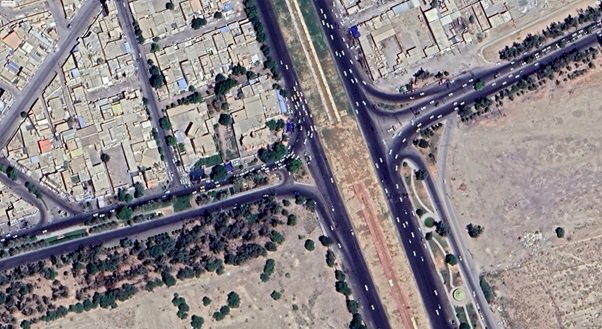Ruins of ancient metal kiln unearthed in Susa

TEHRAN – A team of archaeologists has recently unearthed the ruins of a metal melting kiln after they dug trenches at a crossroads in the modern city of Shush, which partly lies on ancient Susa.
The ruins are estimated to date from between the late Sassanid era and the early Islamic epoch, according to the Research Institute for Cultural Heritage and Tourism.
This estimate is further supported by two coins and a bronze arrowhead discovered in the lower layers of the metal melting kiln. CHTN quoted archaeologist Mehdi Omidfar as saying on Monday.
In the current archaeological season, seven trenches, each measuring three-by-three meters, have been dug at the junction after municipality personnel removed an old bridge to construct an underpass instead, Omidfar explained.
Situated in southwest Iran, the UNESCO-listed Susa is an archaeological site occupying the whole southern flank of modern Shush. Originally similar in scale to the UNESCO-designated Persepolis, the city saw countless invasions and sackings during its history, which spans almost 6,000 years.
Susa was once the winter residence of Persian kings after having been captured by Cyrus the Great. Susa became part of the Persian Empire under Cyrus II, the Great in 538 or 539 BC.
Various archaeological seasons in Susa have yielded ample relics, including pottery, arms, ornamental objects, metalwork, bronze articles, as well as clay tablets. Susa is also a gateway to several worthy destinations, such as the UNESCO-tagged ziggurat of Tchogha Zanbil, the ruins of Achaemenid Apadana Castle, Shush Castle (Akropol), Prophet Danial Shrine, Museum of Susa, the archaeological mount of Haft Tapeh.
In the Bible, Susa is known primarily from the story of Esther in which Haman the Agagite planned to defeat the Jews of Persia. According to the story, Esther outwitted him by persuading her husband, King Ahasuerus of Persia, to sabotage Haman’s plan. The episode is commemorated every year in the Jewish Purim festival, which is marked with costumed parties and other celebrations, according to Ancient Origins.
Susa is also mentioned in Nehemiah and Daniel, both of whom lived in the city during the 6th century BC in the period known as the Babylonian captivity when several Jews were held captive following the siege of Jerusalem by Nebuchadnezzar. A tomb known as Shush-Daniel is believed to be that of Daniel himself. It is capped by an unusual white cone which some believe was formerly a stone ‘Star of David.’
Archaeological evidence suggests that Susa has been continuously inhabited since 4,200 BC, placing it among the oldest continuously inhabited cities in the world. In addition, there are traces at Susa of a village inhabited around 7,000 BC and painted pottery dating from ca. 5,000 BC at the site.
Artifacts discovered at the site include carved cylinder seals, jewelry, clay balls, and clay tablets with cuneiform inscriptions recording business transactions, political history and mathematical calculations.
During the Sasanian age, the city had a large Christian community. It was sacked by the Sasanian king Shapur II, who transferred the population to Iwan-e Karkheh, but Susa was sufficiently recovered in the early seventh century to fight against the Arabs, who nevertheless captured the city which remained important until the thirteenth century CE.
According to UNESCO, “the excavated architectural monuments include administrative, residential, and palatial structures” and the site contains several layers of urban settlement dating from the 5th millennium BC through the 13th century CE.
AFM
